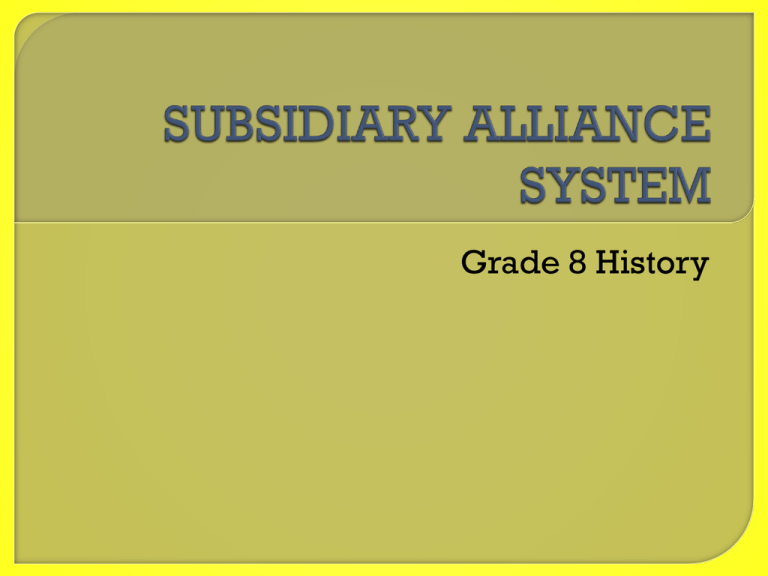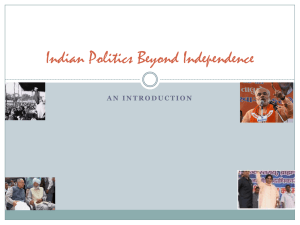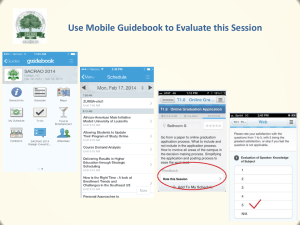SUBSIDIARY ALLIANCE SYSTEM
advertisement

Grade 8 History The Subsidiary Alliance system was a method started by Lord Wellesley to subjugate (completely bring them under their control) Indian powers without spending money on fighting wars. According to this system, any Indian ruler who felt threatened by external attacks and internal revolts, could take help from the English and enter into an alliance (partnership) with them. The English, would then take the responsibility of protecting the ruler. The Indian ruler had to accept certain terms and conditions: 1. For the protection of the Indian ruler, British troops would be permanently placed in the territory of the subsidiary state. 2. The ruler would have to pay for the maintenance of the troops. 3. He had to keep a British official at his court. 4. He could not employ other Europeans (except English) in his service or remove those who were already there. 5. He could not form an alliance (partnership) with any other power without the permission of the English. This system proved very advantageous for the English: 1. They maintained large armies at the expense of the Indian rulers. 2. The English got valuable territories as subsidiary payment, which led to the expansion of the British empire in India and an increase in its resources. 3. The influence of other European rivals was removed from the courts of the Indian rulers. 4. The English controlled the foreign policy of the subsidiary states. The Subsidiary Alliance had disastrous effects for the Indian rulers: 1. The Indian rulers of subsidiary states lost their independence. They became puppets in the hands of the English. 2. The payment of huge subsidies (money) led to a heavy drain (decrease) on their resources. 3. The administration collapsed. The English used this as an excuse to annex (attach) the kingdom on grounds of mismanagement. 4. The rulers lost interest in the welfare of the people. This is because the Indian rulers were fully protected by the English and they were no longer afraid of revolts and attacks. The people suffered under oppressive (troublesome)rulers. Awadh was a subsidiary state. The Subsidiary Alliance which the Nawab of Awadh had signed had protected the Nawab from external invasions and internal rebellion. It made the Nawab unconcerned about the affairs of the state. The payment of subsidies to the Company exhausted the state treasury. When the administration was on the verge of collapse, Dalhousie brought charges of maladministration against the Nawab. Based on these charges, he deposed (remove from office) the Nawab and annexed Awadh in 1856.











